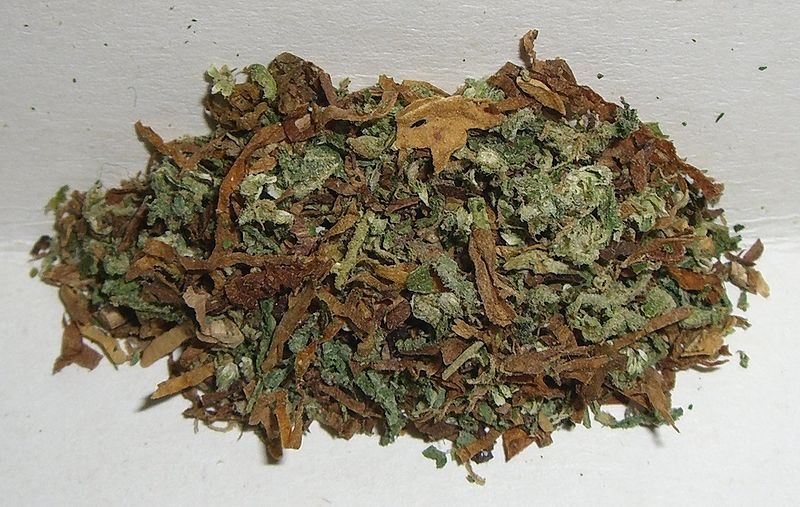Irrespective of where you look, there always seems to be some wispy form of cannabis misanthrope (hater as the kids say) lurking in the shadows, still firing paper darts at the blossoming body of scientific and medicinal research and validation. Doctors are discovering the magic behind the endocannabinoid system. [1] Terpenes have gone anti-viral. [2,3] Cannabinoids are increasingly of interest in cancer treatment. Children, veterans, senior citizens, the anxious, the depressed, people in pain, those who have fallen to opioids, those who can’t sleep, those suffering from Alzheimer’s or Parkinson’s disease — the list goes on and on and on… cannabis provides an option for all of these people, sometimes representing a last-ditch effort to get well.
The cannabis plant and its natural pharmacy have launched a relentless assault on the piles of propaganda that we’ve been “taught” over some 80+ years. What flew back then can’t tread water today. And yet, like barnacles, there’s clingers-on, desperately clutching cannabis’s legs like a combative child unwilling to let go.
It’s no surprise, though, both because of the previously mentioned medicinal benefits and because cannabis is still listed as a Schedule I drug without medical value. These facts bring concomitant adversaries. When you reflect on this for too long, visions of a blatant disregard for humanity might take root.
The bad information that we’ve been fed has been thought to emanate from various angles. A 2014 article by Ben Cohen of Ben and Jerry’s Ice Cream discussed sectors like criminal justice, Big Pharma (see here), or Big Alcohol (see here).
One name not on that list or others is Big Tobacco. At one point, the tobacco industry may have fought cannabis, exemplified by the funding of the senate campaign of Jeff Sessions by RJ Reynolds. But, there are reports that Big Tobacco now lobbies heavily for cannabis legalization, and Phillip Morris/Altria is the proof.
It’s said that over 480,000 people are killed annually in the United States from the effects of cigarette smoking, and that 34,200,000 US adults smoke cigarettes. Smoking-related medical issues are reported to cost $170,000,000,000 each year. The evidence has taken root.
Forbes reported in 2018 that Altria “has faced fewer Americans smoking each year since… basically the sixties.” For some, e-cigarettes and vaping were the answer for a safer and still lucrative way to titrate with nicotine. But that became muddled with e-cigarette, or vaping, product use-associated lung injury (EVALI).
For others, the answers resided in nicotine patches, which have spawned journal articles advertising the medicinal possibilities of the patch. But some of these studies were conducted by scientists with ties to Big Pharma or Tobacco, and another paper came out lambasting the new tact of drug companies. [4]
And then there are cannabis consumers. The use of cannabis mixed with tobacco in spliffs or blunts is common in many places across the globe. Anecdotally, people sometimes report being addicted to nicotine following their ritual use of both plants in tandem. A 2016 study hypothesized that long-term cannabis legalization “could be linked to increased cigarette and [cannabis] co-use in adults and these co-users were associated with greater cigarette nicotine dependence.” [5] This study was quite limited, however, employing a small sample size, “not representative of the US population.” Other studies, right or wrong, have voiced similar findings, although some of the studies are rather dated. [6] In other words, the studies postulated that people who use both products have a greater dependence on nicotine.
Adding to the complexity, a study funded by the anti-cannabis/anti-legalization National Institute of Drug Abuse (NIDA) reported a more intertwined relationship between cannabis and nicotine use. [7] Increased cigarette smoking predicted increased cannabis use in adolescents. When considering study participants from their mid-to-late 20s, however, increased cannabis use predicted increased cigarette smoking. An odd reciprocal relationship was found that related increased cigarette smoking at age 24 with increased cannabis use at age 27, and increased cannabis use at age 24 with increased cigarette smoking at age 27. Definitely weird stuff, but the researchers report that they couldn’t test for simultaneous cannabis and nicotine use, and that “generalization of study findings should be conducted with caution.”
The researchers pointed to possible mechanisms, perhaps the most interesting being that chronic nicotine use has been shown to change the number of cannabinoid receptors and the levels of endocannabinoids in parts of the brain associated with emotions. [7,8] Researchers found that “nicotine pre-treatment enhanced several responses to cannabis, in particular, heart rate and reports of being “stimulated” on the visual analogy scales…” [7] It’s worth noting that the study reports that the “observed relationships may be due to other preexisting or potential confounding factors not tested here.” So, they don’t really know.
Some blunt or spliff consumers report a “boost” to their highs. [9] As usual, other studies say that’s not true, but relate that nicotine “can reduce… unpleasant effects of cannabis in the short term, by boosting memory and attention. These findings provide new insight into why people add tobacco to their joints and are often addicted to tobacco after they quit cannabis.”
So, if Big Tobacco is commissioning these studies or at least watching how they play out, maybe that’s why their stance on cannabis has changed. As Forbes discussed regarding Altria, “by entering the cannabis market… Altria can move to take market share, research products, and position itself in new markets as they open.” If traditional nicotine sales are waning, and there’s any credence to increased co-use of nicotine and cannabis, especially in geographies where blending the two is common, maybe it’s once again the age-old adage of “if you can’t beat ‘em, join ‘em.”
References
- Metcalf J. The endocannabinoid system. Terpenes & Testing Magazine. Jan-Feb 2019.
- Jassim S, Naji M. Novel antiviral agents: a medicinal plant perspective. Journal of Applied Microbiology. 2003;95:412-427. [journal impact factor = 3.066; times cited = 403 (Semantic Scholar)]
- Boukhatem M. Effective antiviral activity of essential oils and their characteristic terpenes against coronaviruses: an update. Journal of Pharmacology & Clinical Toxicology. 2020;8(1):1138. [journal impact factor = N/A; times cited = N/A (ResearchGate)]
- Ling P, Glantz S. Tobacco company strategies to identify and promote the benefits of nicotine. Tob Control. 2019;28(3):289–296. [journal impact factor =6.726; times cited = 2 (Semantic Scholar)]
- Wang J, Cataldo J. Medical marijuana legalization and co-use in adult cigarette smokers. Am J Health Behav. 2016;40(2):205–214. [journal impact factor =1.84; times cited = 10 (Semantic Scholar)]
- Patton GC, et al. Reverse gateways? Frequent cannabis use as a predictor of tobacco initiation and nicotine dependence. Addiction. 2005;100(10):1518–1525. [journal impact factor = 6.851; times cited = 265 (Semantic Scholar)]
- Kristman-Valente AN, et al. The relationship between marijuana and conventional cigarette smoking behavior from early adolescence to adulthood [published correction appears in Prev Sci. 2017 May;18(4):439]. Prev Sci. 2017;18(4):428-438. [journal impact factor = 3.361; times cited = 5 (Semantic Scholar)]
- Viveros MP, Marco EM, File SE. Nicotine and cannabinoids: parallels, contrasts and interactions. Neurosci Biobehav Rev. 2006;30(8):1161-1181. [journal impact factor = 8.33; times cited = 85 (Semantic Scholar)]
- Lipperman-Kreda S, Lee JP. Boost your high: cigarette smoking to enhance alcohol and drug effects among Southeast Asian American youth. J Drug Issues. 2011;41(4):509-522. [journal impact factor = 1.214; times cited = 11 (Semantic Scholar)]
Image Credit: Wikicommons








